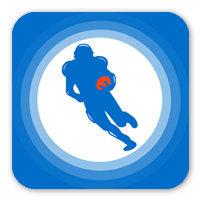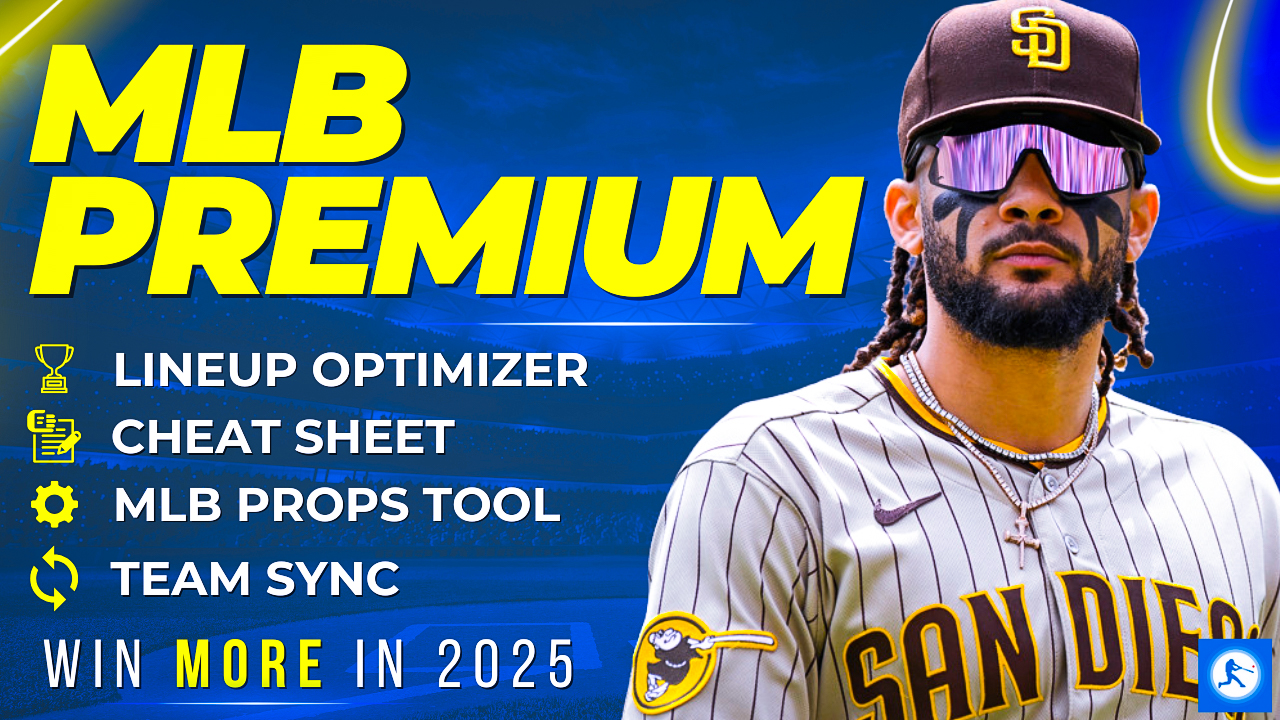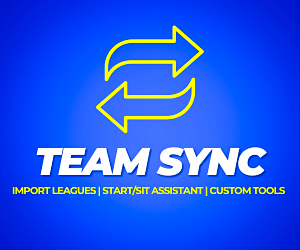Sam Chinitz reviews notable starting pitchers on the Statcast leaderboard for hard hit rate (Hard%) and exit velocity from the 2020 MLB season. These SP were great draft values and could be strong fantasy baseball options again.
Pitcher contact quality can be a tricky attribute for fantasy managers to incorporate into their analysis. On one hand, pitchers are more at the whim of hitters when it comes to contact quality than the other way around. On the other hand, it certainly seems as though pitchers can exert meaningful control over their contact quality metrics.
A glance at the pitchers with the lowest 2020 hard-hit rates should yield no surprises. Near the top sit pitchers like Hyun Jin Ryu, Kenta Maeda, and Julio Urias, all of whom have consistently posted relatively low hard-hit rates over their careers.
The ability to maintain a low hard-hit rate is not an inconsequential skill for pitchers, either. Hard-hit rate correlates relatively strongly with xwOBAcon for pitchers, and the correlation suggests that changes in pitcher hard-hit rates can have significant impacts on ERAs. With that in mind, I’ll examine the extent to which pitchers might be able to control their hard-hit rates and consider pitchers at either end of the hard-hit rate spectrum in 2020 through that lens.
Be sure to check all of our fantasy baseball lineup tools and resources:- Fantasy baseball trade analyzer
- BvP matchups data (Batter vs. Pitcher)
- PvB matchups data (Pitcher vs. Batter)
- Who should I start? Fantasy baseball comparisons
- Daily MLB starting lineups
- Fantasy baseball closer depth charts
- Fantasy Baseball live scoreboard
- Fantasy baseball injury reports
Methodology
Conventional wisdom holds that batters almost exclusively control their exit velocities (and, by extension, hard-hit rates), and it’s a claim that’s easy to support. Bat speed accounts for the vast majority of a batted ball’s exit velocity and is entirely hitter-controlled. Plus, while average exit velocity and hard-hit rate are fairly sticky for hitters, that isn’t the case for pitchers.
But pitchers may have more control over exit velocities than they tend to get credit for. Consider that Ryan Yarbrough has posted a hard-hit rate below 27% in each of the past three seasons and that Kyle Hendricks has never allowed a hard-hit rate above 32%. Even beyond those two pitchers (and those listed in the introduction), there seems to be a long list of pitchers who have consistently produced better-than-average hard-hit rates.
That some pitchers manage to limit hard-hit balls better than others isn’t the only reason to suspect that pitchers have some control over their hard-hit rates. Another reason is that fastballs tend to be hit much harder than other pitches, suggesting that the anatomy of a pitch affects exit velocity.
| Pitch Type | Hard-Hit % | Avg. Exit Velocity |
| 4-Seamer | 42% | 90.4 |
| Changeup | 28% | 85.2 |
| Curveball | 32% | 86.1 |
| Slider | 31% | 85.8 |
Of course, some of that difference can be attributed to the fact that fastballs are generally thrown harder than the other pitchers listed, but a 10 mph gap between a fastball and a changeup (or other secondary pitch) would only account for a two mph difference in exit velocity -- not nearly enough to explain the roughly five mph gap in exit velocity here.
One other potential explanation for the difference in average exit velocity and hard-hit rate between pitch types would be if more powerful hitters make a disproportionate amount of their contact against fastballs compared to secondary pitches. However, that doesn’t seem to be the case. Instead, there is a weak negative correlation between the proportion of a hitter’s batted balls that are fastballs and the hitter’s maximum exit velocity.
Since neither pitch velocity nor hitter strength explains the differences in average exit velocity and hard-hit rate by pitch type, some other factor(s) must. For a clue into what that might be, consider this formula for exit velocity from Alan Nathan, where BBS is batted ball speed (exit velocity) and q is the collision efficiency:
BBS = q*(pitch speed) + (1+q)*(bat speed)
With that formula in mind, there are two possible ways for fastballs to be hit much harder than non-fastballs:
- Hitters tend to have slower swings against slower pitches.
- Collision efficiency tends to be lower against non-fastballs than fastballs.
Collision efficiency is a measurement that describes the energy lost to the vibration of the bat on contact and is dependent on the point on the bat where contact is made. Dr. Nathan’s graph below demonstrates that effect; focus on how q changes based on the part of the bat where contact is made.
Crucially, the spectrum of values for q combined with changes in pitch speed can explain the differences in exit velocity between pitch types. For example, a fastball that crosses the plate at 85 mph with a 70 mph bat speed and a q of 0.2 would yield an exit velocity of 101 mph. Imagine that the pitcher threw a changeup hit towards the end of the bat instead, though. In that case, q might be 0.15 and the pitch speed might drop to 75 mph, lowering exit velocity nine mph to 92 mph. So if pitchers can control where on the bat contact is made, then they can control (at least to some extent) exit velocity.
Without publicly available bat speed and bat-to-ball contact data, there’s no way to know which of the two possibilities is true. It’s plausible that breaking and offspeed pitches are more likely to be hit off of the ends of a hitter’s bat than fastballs, though, and factors within a pitcher’s control -- like tunneling and pitch location -- may play a role in where on the bat a hitter makes contact.
Working in favor of that claim is that the league average exit velocities by pitch location (using Statcast’s Gameday Zones) are remarkably consistent year to year and that the exit velocities are lower against pitches further away horizontally from the middle of the strike zone. On an individual batted ball level, there is a weak but notable negative relationship between a pitch’s horizontal distance from the middle of the strike zone and its exit velocity. Importantly, that relationship is substantially stronger than the virtually nonexistent relationship between a pitch’s vertical distance from the middle of the strike zone and its exit velocity.

Standard Deviation of league average exit velocity by year and league average exit velocity for each Gameday Zone, 2015-20.
None of this is to say that pitchers have total control over exit velocity, and it’s still clear that hitters can claim most of the control over exit velocity. It’s likely that pitchers can pitch in ways that minimize their average exit velocities and hard-hit rates, though, and that’s important to keep in mind. For this article, that notion means that I’ll focus specifically on two sets of pitchers: pitchers who have not posted consistently low exit velocities in the past but did so in 2020 and pitchers who have posted consistently low exit velocities in the past but did not do so in 2020.
Pitchers With Low 2020 Hard-Hit Rates
The vast majority of the pitchers on the leaderboard below (min. 100 BBE) have displayed a talent for consistently limiting hard-hit balls over their careers, and I won’t focus on them here. That doesn’t mean those pitchers didn’t make improvements in 2020 -- Maeda’s diminished fastball usage likely played a role in his career-best 24.7% hard-hit rate, for example -- but pitchers who already had multiple seasons of limiting hard-hit balls coming into 2020 won’t get a section in this article.
| Name | Hard-Hit % |
| Max Fried | 23.8 |
| Kenta Maeda | 24.7 |
| Ryan Yarbrough | 25.1 |
| Julio Urias | 28.6 |
| Martin Perez | 29.2 |
| Hyun Jin Ryu | 29.2 |
| Cristian Javier | 29.3 |
| Jordan Montgomery | 29.9 |
| Rich Hill | 29.9 |
| Tyler Anderson | 31.1 |
| Dallas Keuchel | 31.3 |
| Kwang Hyun Kim | 31.4 |
| Kyle Hendricks | 31.8 |
| Pablo Lopez | 32.3 |
| Jack Flaherty | 32.4 |
Max Fried, Atlanta Braves
Fried has been an excellent launch-angle suppressor over his young career, but he’d posted a near-40% hard-hit rate in each season before 2020. A nine-point dip in fastball usage rate likely played a role in Fried’s improved 2020 hard-hit rate, but the fastball’s usage drop wasn’t Fried’s only notable hard-hit-related adjustment.
In addition to its lower usage, Fried’s fastball saw its hard-hit rate fall from 47% in 2019 to an impressive 20% in 2020. Unsurprisingly, a location adjustment likely played a significant role in the pitch’s improved performance.
Fried located his fastball away from the middle of the plate and outside of the strike zone much more frequently in 2020, an adjustment that almost definitely drove his improved hard-hit rate. Fried’s improved hard-hit rate probably won’t be quite as strong in 2021 given that no fastball posted a hard-hit rate below Fried’s 2020 20% mark in 2019 (min 170 fastballs), but fantasy managers should expect Fried to post a hard-hit rate below 30% again in 2021 as long as his location adjustment sticks.
Pablo Lopez, Miami Marlins
Like Fried, Lopez demonstrates the control pitchers can have over their hard-hit rates. In Lopez’s case, his hard-hit rate has tracked closely with his fastball usage. Decreased fastball usage wasn’t the only factor affecting Lopez’s hard-hit rate, though. Lopez’s sinker cut its hard-hit rate by 20 points to 22% in 2020, and it came with a likely related 10-point bump in out-of-zone rate while sitting further away from the middle of the strike zone on average.
The question for Lopez in 2021 is whether or not those changes will be maintained. Given that Lopez posted a career-best 3.61 ERA in 2020, fantasy managers should expect Lopez to maintain at least most of his lower fastball usage and improved sinker location, and a hard-hit rate near 30% is a reasonable expectation as a result.
Kwang Hyun Kim, St. Louis Cardinals
Kim held hitters to a solid 31.4% hard-hit rate in his rookie season, and he did it with some encouraging under-the-hood numbers. Most notably, Kim masterfully avoided the most dangerous parts of the strike zone with his fastball, locating the pitch in the middle of the zone only 4.7% of the time while attacking all edges in a way that few (if any) other pitchers can.

That said, Kim isn’t likely to post a hard-hit rate below 30% in 2021. The lack of a truly dominant secondary pitch (from a hard-hit rate perspective) probably hurts Kim’s chances of maintaining such a low hard-hit rate, and his relatively small batted-ball sample in 2020 doesn’t do him any favors. Even so, Kim’s apparent pinpoint command should allow him to consistently post a better-than-average hard-hit rate going forward.
Pitchers With High 2020 Hard-Hit Rates
| Name | Hard-Hit % |
| Ryan Weber | 50.4 |
| Jorge Lopez | 49.6 |
| Framber Valdez | 48.7 |
| Derek Holland | 48.3 |
| Alex Cobb | 48.2 |
| Brett Anderson | 48.1 |
| Chris Paddack | 47.4 |
| Patrick Sandoval | 47.4 |
| Justus Sheffield | 46.6 |
| Anthony DeSclafani | 46.5 |
| Jon Gray | 46 |
| Robbie Ray | 46 |
| Ryan Castellani | 45.1 |
| Justin Dunn | 44.9 |
| Michael Fulmer | 44.7 |
Justus Sheffield, Seattle Mariners
Sheffield’s 2020 season was a lot like Fried’s 2019 season in that both pitchers were able to get away with high hard-hit rates by inducing a high rate of undesirable (for hitters) launch angles, and that comparison should intrigue fantasy managers. It’s unlikely that Sheffield makes the same jump that Fried did, though, and that’s important to keep in mind.
Unlike Sheffield, Fried already had a pair of secondary pitches that posted solid hard-hit rates coming into 2020, and Sheffield’s lack of a strong secondary pitch is likely to hurt his chances of making a Fried-style hard-hit rate improvement. Still, Sheffield has a chance to meaningfully cut his hard-hit rate in 2021 with a location adjustment for his sinker and should be on the radar of fantasy managers as a result.
Chris Paddack, San Diego Padres
On the surface, Paddack did much of what I’ve suggested in this article to lower his hard-hit rate. Notably, Paddack both decreased his fastball usage and threw a higher percentage of his fastballs outside of the strike zone. Despite those changes, Paddack’s fastball saw its hard-hit rate rise 22 points in 2020, driving a 15 point increase in his overall hard-hit rate.
Paddack’s biggest issue in 2020 was likely that his fastball was easy to read for some reason; the pitch saw its chase rate drop by 10 points in 2020, and a higher percentage of Paddack’s allowed contact came against fastballs in the strike zone as a result. Although the exact reason behind Paddack’s issues isn’t clear it’s unlikely that Paddack struggles so severely in 2021, and fantasy managers should expect his hard-hit rate to fall towards the league average mark.
Ryan Weber, Boston Red Sox
Weber went from one of the best hard-hit rates in the league in 2019 (28.4%) to the worst in 2020 (50.4%), and the 30-year-old will likely end up with a hard-hit rate somewhere in the middle in 2021. Despite no apparent significant change in usage, Weber’s sinker (his most-used pitch) saw its hard-hit rate shoot up nearly 30 points to 59% in 2020, driving his high overall hard-hit rate.
One of the main factors affecting Weber’s sinker in 2020 was its inability to get hitters to chase it outside of the strike zone, but that likely wasn’t enough to justify Weber’s high hard-hit rate on its own. Luck likely also played a significant role in Weber’s high hard-hit rate in 2020, and fantasy managers should expect Weber to post a hard-hit rate of around 36% in 2021 as a result.
Download Our Free News & Alerts Mobile App
Like what you see? Download our updated fantasy baseball app for iPhone and Android with 24x7 player news, injury alerts, sleepers, prospects & more. All free!

More 2021 Fantasy Baseball Advice





 RADIO
RADIO





























